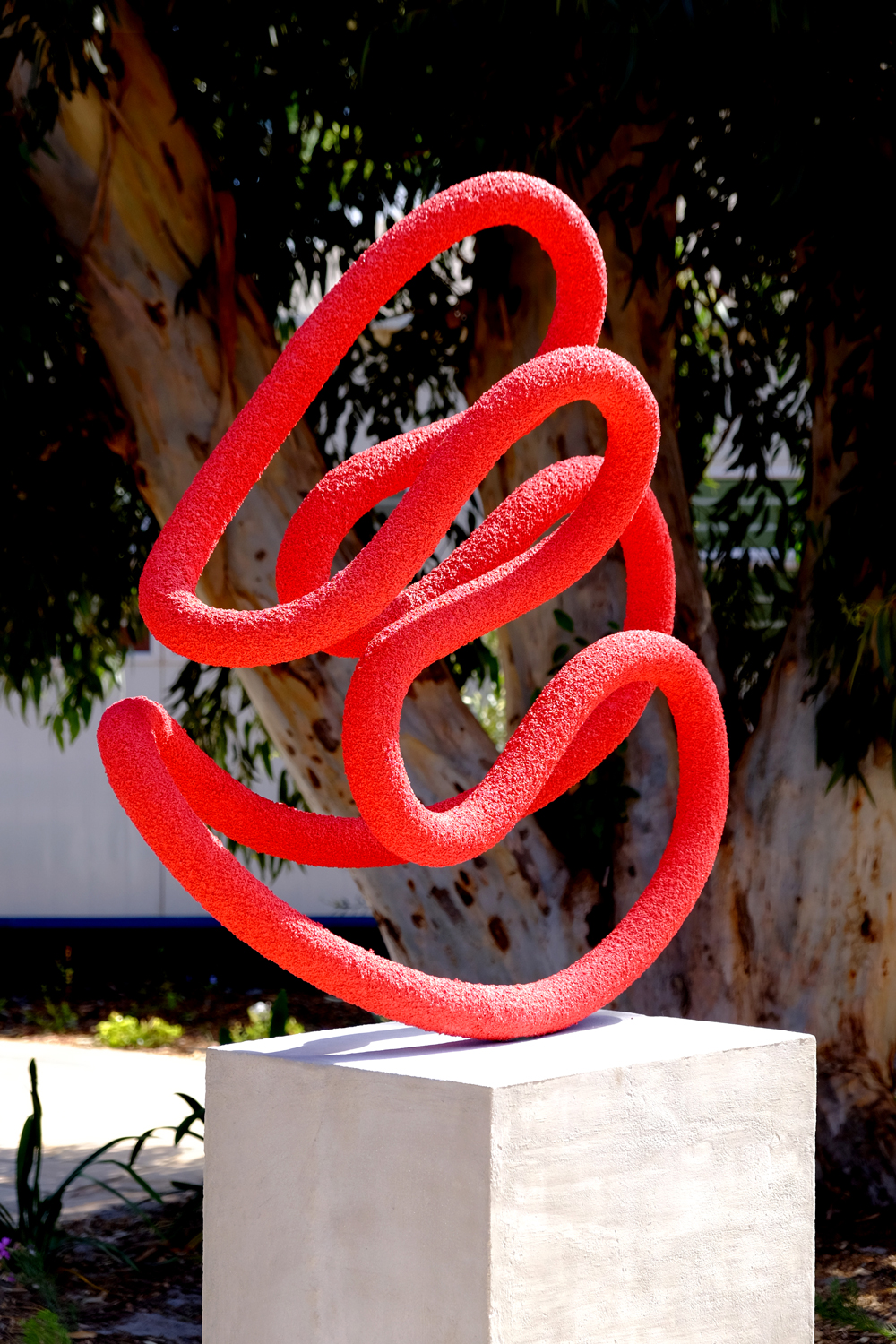︎ Public Sculpture


Red Edge (Ouroboros 1.2.1) 2019
Polyethene Foam, Glass Fibre, Resin, Quartz Chrystals, Pigment.
98 x 69 x 65cm
Public sculpture installed at the Desmond Tutu HIV Foundation near Masiphumalele, Cape Town.
Red Edge (Ouroboros 1.2.1) is comprised of an unfolding series of dynamic curves that urge the spectator onward to a new and different viewpoint until a circuit is completed. The form embodies the patterns that govern both the human body and the natural world - simultaneously evoking the symbolic AIDS ribbon and the double-helix structure of DNA.
“The sculpture explores pattern as the basis for understanding”, David reflects. “Seeing pattern is something which happens in the mind - you can see things with your mind that you cannot see with your eyes alone. Constantly recreating itself, the sculpture goes to the essence of what it means to see and perceive. It makes us aware of the great patterns of which we are part.”
“Not only is David’s sculpture an eye-catching feature”, says Githa Maralack of the Desmond Tutu HIV Foundation, “it truly resonates with our work here - striving to impact both research and treatment relating to HIV and TB from within the community of Masiphumelele, rippling out to the wider world. There is no doubt in my mind that individuals leave our centre having not only information highlighting the work that takes place here but a memory ‘stamp’ of the Ouroboros sculpture to encapsulate their whole experience with us.”
Polyethene Foam, Glass Fibre, Resin, Quartz Chrystals, Pigment.
98 x 69 x 65cm
Public sculpture installed at the Desmond Tutu HIV Foundation near Masiphumalele, Cape Town.
Red Edge (Ouroboros 1.2.1) is comprised of an unfolding series of dynamic curves that urge the spectator onward to a new and different viewpoint until a circuit is completed. The form embodies the patterns that govern both the human body and the natural world - simultaneously evoking the symbolic AIDS ribbon and the double-helix structure of DNA.
“The sculpture explores pattern as the basis for understanding”, David reflects. “Seeing pattern is something which happens in the mind - you can see things with your mind that you cannot see with your eyes alone. Constantly recreating itself, the sculpture goes to the essence of what it means to see and perceive. It makes us aware of the great patterns of which we are part.”
“Not only is David’s sculpture an eye-catching feature”, says Githa Maralack of the Desmond Tutu HIV Foundation, “it truly resonates with our work here - striving to impact both research and treatment relating to HIV and TB from within the community of Masiphumelele, rippling out to the wider world. There is no doubt in my mind that individuals leave our centre having not only information highlighting the work that takes place here but a memory ‘stamp’ of the Ouroboros sculpture to encapsulate their whole experience with us.”


